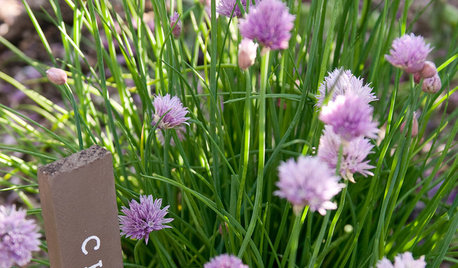Worst garden day ever
cat22woman
13 years ago
Related Stories

DECORATING GUIDES10 Design Tips Learned From the Worst Advice Ever
If these Houzzers’ tales don’t bolster the courage of your design convictions, nothing will
Full Story
DECORATING GUIDESFrom Queasy Colors to Killer Tables: Your Worst Decorating Mistakes
Houzzers spill the beans about buying blunders, painting problems and DIY disasters
Full Story
FALL GARDENINGMake This Fall’s Garden the Best Ever
Learn the most important tip for preventing buyer’s remorse, plus get more valuable buying and planting advice
Full Story
DECORATING GUIDESThe Dumbest Decorating Decisions I’ve Ever Made
Caution: Do not try these at home
Full Story
FIREPLACESRumford Fireplaces Are Hotter Than Ever
Higher efficiency and good looks are leading homeowners back to this 18th-century fireplace design
Full Story
FURNITURE6 Decades-Old Designs That Look Better Than Ever
After getting a few nips and tucks, some favorites from the ’60s and ’70s have made a stylish comeback
Full Story
DECORATING GUIDESThe Most Helpful Furniture Piece You May Ever Own
Use it as a table, a seat, a display space, a footrest ... and indoors or out. Meet the ever-versatile Chinese garden stool
Full Story
ROOM OF THE DAYRoom of the Day: A Laundry So Cheery, Wash Day Is Wonderful
Pretty paint and playful touches banish chore-day blahs in a laundry room designed for a magazine’s Idea House
Full Story
GARDENING GUIDESSimple Pleasures: Savor the First Spring Day in the Garden
How will you answer the call of the garden once the birds are chirping, the bulbs are blooming and the air is inviting?
Full Story
LIFEThe Moving-Day Survival Kit: Lifesaving Items and Niceties
Gather these must-haves in advance for a smooth move and more comfortable first days in your new home
Full StorySponsored




p_mac
shankins123
Related Discussions
I'm calling it. WORST gardening weather ever this spring.
Q
Worst year ever???
Q
Worst place you've ever gotten a rose thorn?
Q
End of Worst Year Ever.
Q
joellenh
cat22womanOriginal Author
Okiedawn OK Zone 7
p_mac
soonergrandmom
cat22womanOriginal Author
Okiedawn OK Zone 7
soonergrandmom
elkwc
cat22womanOriginal Author
Okiedawn OK Zone 7
elkwc
melissia
cat22womanOriginal Author
marcy3459
Okiedawn OK Zone 7
cat22womanOriginal Author
cat22womanOriginal Author
marcy3459
Okiedawn OK Zone 7
cat22womanOriginal Author
elkwc
cat22womanOriginal Author
cat22womanOriginal Author
elkwc
Okiedawn OK Zone 7